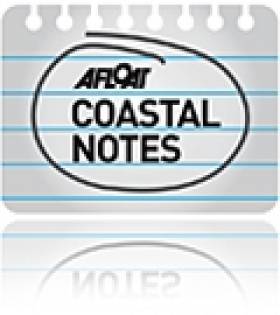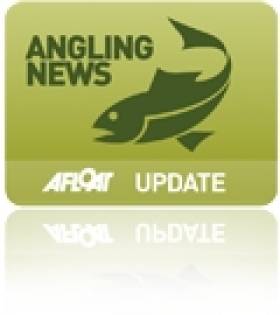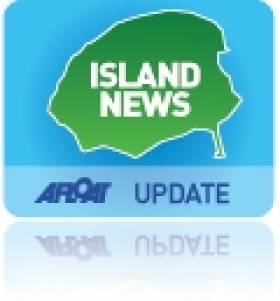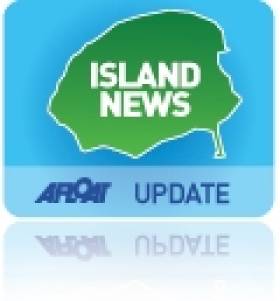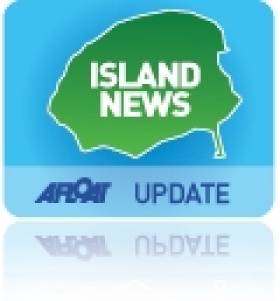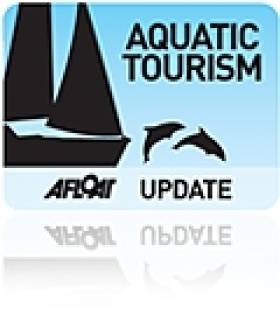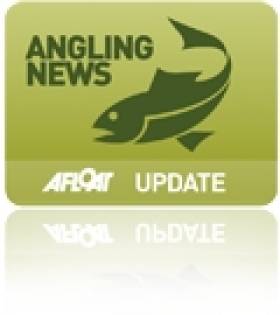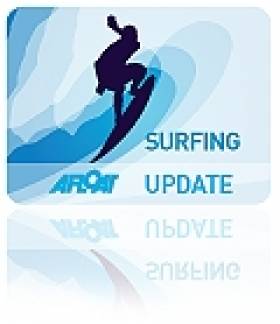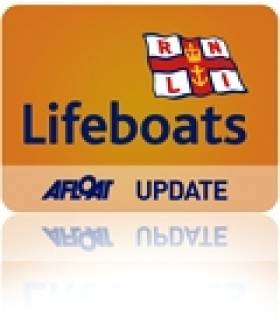Displaying items by tag: tourism
More Funding Announced For 'Wild Atlantic Way'
#WildAtlanticWay - TheJournal.ie reports that an additional €1.4 million in State funding will be winging its way to the new Wild Atlantic Way scheme.
Earlier this year Kinsale Yacht Club was announced as the starting point of the 2.500km coastal tourism route that was first launched almost a year ago.
Presented to 300 top overseas tour operators attending Meitheal 2013 - Ireland’s largest tourism trade fair - by Minister of State for Tourism Michael Ring and Fáilte Ireland, the ambitious project constitutes Ireland’s first long-distance driving route winding from Cork to the Inishowen Peninsula in Donegal.
The latest funding injection will provide for the completion of the Galway Greenway walking and cycling trail - itself a phase of a long-term scheme to connect the City of the Tribes to the capital along the route of the Royal Canal.
Downpatrick Head in Mayo will also receive funds for a visitor centre connected to its famous blowhole Poll na Seantainne. And Kinsale will get money to help restore the Signal Tower at the Old Head of Kinsale.
TheJournal.ie has more on the story HERE.
€550k Facilities Upgrade Plan For Cliffs Of Moher
#CliffsOfMoher - The visitor centre at the Cliffs of Moher, one of the most high profile and best known discovery points along the newly launched Wild Atlantic Way, is to benefit from significant upgrade works during the coming weeks.
Management at the Cliffs of Moher Visitor Experience in Co Clare have announced a €550,000 plan to upgrade the existing public car park, provide additional coach parking, and upgrade the centre's exhibition.
Contracts have already been awarded for the coach parking and exhibition upgrades, with works due to commence shortly, while a planning application has been submitted in respect of the proposed car park improvements.
Mayor of Clare Cllr Joe Arkins welcomed the announcement, saucing: "The Wild Atlantic Way presents significant opportunities for tourism development right along the western seaboard of Ireland with Clare prominently featured as part of the new touring route that stretches from Donegal to West Cork.
"The proposed upgrade works at the Cliffs of Moher will complement what is already a high quality visitor attraction and will enable management at the cliffs to build on the impressive visitor number increases experienced during the past three years."
Visitor numbers at the Cliffs of Moher Visitor Experience were up 10% during 2013. Some 960,134 people visited the world famous tourist attraction last year compared to 873,988 during the previous year.
It is the third successive increase in visitor numbers to the Cliffs of Moher with year-on-year increases of 12% and 8% being achieved during 2011 and 2012 respectively.
Commenting on the proposed works, cliffs director Katherine Webster said: "The upgrades to the coach park and car park will provide an improved experience for our group and car based customers with increased capacity and a better layout including e-car charging points, additional disabled parking and improved pedestrian flow.
"The new exhibition content will bring fresh exciting new experiences and greater visitor interactivity to the Cliffs Exhibition. The upgrade is being provided by Dublin-based Rockbrook Engineering, and we’re delighted with how their proposals will bring some of the outdoor experience of the cliffs inside into the dome area."
The Cliffs of Moher Visitor Experience is one of three Signature Discovery Points in Co Clare along the route of the Wild Atlantic Way, the others being the Bridges of Ross and Loop Head Lighthouse.
Ireland Goes Fishing For Anglers At Major French Show
#Angling - Attending the Salon de la Pêche at Clermont-Ferrand in central France last weekend, Minister of State Fergus O’Dowd lent his support to Inland Fisheries Ireland (IFI), the Loughs Agency, Northern Ireland's Department of Culture, Arts and Leisure (DCAL) and industry partners in promoting the island of Ireland an as an angling destination.
For the first time the three agencies came together under the ‘Angling in Ireland’ (or ‘Pêche en Irlande’) banner and hosted angling industry partners in a co-ordinated approach to attract greater numbers of French anglers to Ireland at the Clermont-Ferrand show - the largest angling show in France, attracting 30,000 visitors annually, and this year celebrating its 25th anniversary.
Minister O’Dowd and IFI chief Dr Ciaran Byrne were welcomed to the show by manager Clement Posada who hosted a lunch for the guests, sponsors and various national presidents of the main French angling federations.
Claude Roustan, president of the National Federation of Angling in France, welcomed the minister and announced that they were honored by the visit from Ireland where he himself had enjoyed many wonderful angling holidays.
The minister welcomed the close ties between French anglers and Ireland, stating that "some of the best of Ireland’s angling products are being promoted here today. It is our intention to attract more French anglers to come to Ireland to enjoy the wonderful fishing, scenery and hospitality that Ireland has to offer."
Commending the joint approach of IFI, DCAL and the Loughs Agency, he noted that "both Minister O Chuilin and I are delighted to see this whole of Ireland approach to angling marketing and we look forward to increased tourism angling and the associated economic benefits which will undoubtedly follow."
Dr Byrne, meanwhile, referred to last summer's socio-economic study that put the value of angling to the Irish economy at more than €750 million.
"I would like to thank the many French anglers that return to Ireland regularly to enjoy their sport and of course the Irish welcome, we look forward to welcoming you and all of your friends again in the future," he added.
Aran Islands Ferry Visits Drop By A Fifth
#IslandNews - Galway Bay FM reports that ferry visits to the Aran Islands have fallen by 20% in six years.
The latest numbers show that fewer than 160,000 people made the trip from Rossaveal in Connemara to the Galway Bay island chain in 2013, compared to the more than 222,000 who made the journey in 2007.
Reduced ferry services to the islands, as well as a general drop-off in tourism to the West of Ireland, have been suggested as possible causes.
Aran Islanders Represent Ireland In China
#IslandNews - Residents of the Aran Islands are currently in China accompanied by the mayor of Co Galway for a worldwide competition that's doubling as an opportunity to market the West of Ireland as a tourism destination.
The delegation from Inis Oírr are in the southeast coastal city of Xiamen representing Ireland in the 'sustainable communities' category of the Pride of Place competition, according to Galway Bay FM.
Aran Islands Get Funding For New Hostel
#IslandNews - Islands development authority Comhar na nOileán Teo has been given ministerial sanction to approve funding for a new three-star hostel in the Aran Islands, as the Galway Advertiser reports.
Some €200,000 in Rural Development Funding will go to the development of the 40-bed hostel on Inis Mór which aims to capitalise on a gap in the tourism market for low-cost accommodation for families and outdoors enthusiasts alike.
"The area of cultural and adventure tourism is growing on Inis Mór," said Minister for the Environment, Community and Local Government, Phil Hogan. "This hostel will be a great addition to the accommodation that is currently available on the island."
The Galway Advertiser has more on the story HERE.
West Cork Holiday Deserves Its Accolades
#Tourism - While angling on Ireland's waterways is undoubtedly a big attraction, there's more to this island's picturesque spots than great fishing, as Brian Gallagher of Scotland's Daily Record discovered on his recent holiday to the south-west.
Gallagher's three-day whistle-stop tour of West Cork included a meal in Ireland's 'food capital' Kinsale during the harbour town's annual arts festival, and a whale watching trip out of Baltimore that took in the rugged, lonely beauty of Fastnet Rock in the Atlantic.
Yet despite cramming a lot into his visit, he "still felt refreshed as it involved a lot of gentle sailing and tasty food.
"I have to admit this corner of Ireland, and the West Cork islands, certainly deserves its culinary title and maybe a visit… or two."
The Daily Record has more on the story HERE.
Ireland's Best Spots For Angling Holidays
#Angling - Looking for a spot to cast your line in Ireland this winter? IrishCentral has you covered with their list of the best places in Ireland for a fishing holiday.
Boasting a climate that's (usually) kind to anglers all year round, Ireland is the perfect location for anyone planning their dream angling vacation or even a last-minute getaway.
And being only a few hours by road from end to end, you're never too far away from your pick of the catch, whether it's Lough Corrib's famous salmon and trout, codling at Rosses Point or even bluefin tuna in Donegal Bay.
Indeed, it's little wonder why angling tourism is worth three-quarters of a billion euro to the Irish economy each year.
IrishCentral has much more on the story HERE.
And for more specific details, the Huffington Post has a great guide to fly fishing in Ireland.
Surfing's Wave Of Popularity Is Good For Tourism
#Surfing - Herald.ie reports on a new drive by Irish tourism chiefs to attract surfers to our shores.
The Discover Ireland campaign has been launched in time for the popular winter surfing season in Ireland.
Despite the cold temperatures, winter is when our waves pick up the most and the pros flock to hotspots like Mullaghmore in Sligo, listed as one of the world's best.
But there's great surfing to be had all around Ireland's coast, from Donegal to West Cork, Waterford and even Wicklow.
And the campaign also hopes to reach Irish people who've never picked up a surfboard before.
#RNLI - Enniskillen RNLI will host the revived Castle Island charity swim and family fun morning in Enniskillen, Co Fermanagh on Sunday 11 August.
The swim traditionally took place each year with the support of the Blake family.
And Enniskillen RNLI have hailed as a "great honour" the opportunity for its local volunteer crew to revive the swim in association with sponsors Blakes the Hollow, Western Cars and The Print Factory.
The 750m swim on Lough Erne is open to swimmers of all ages either individually or in small groups such as youth clubs, sports clubs or simply groups of friends.
Enniskillen RNLI says the emphasis for this swim is for everyone to have fun and for that reason, if required, novice swimmers may complete the swim in a well-fitted lifejacket or buoyancy aid but must be confident that they can complete the distance.
Lifeboat crew not swimming themselves will also be present on the day to provide safety cover for the event.
Registration for the swim will take place at 12 noon on the day, followed by a short safety briefing. Sponsorship forms are available by email or can be collected at The Wig & Crown, Blakes the Hollow and Western Cars. For further information contact Adrian at 07974 730456.
In other news, RTÉ Radio 1’s The Business will broadcast live from Bundoran RNLI lifeboat station this Saturday morning 3 August.
The focus of the show will be on the business of Bundoran being a seaside resort - a reputation the Donegal town has enjoyed for more than two centuries.
Speaking ahead of his visit, programme host George Lee said: "I'm really looking forward to broadcasting from Bundoran, particularly on a bank holiday weekend. I'm hoping to experience lots of surfing, slots machines and ice-creams.
"On the show we'll be looking back at the heyday of the dancehalls, we'll be joined by Bundoran regular Ramona Nicholas from Dragon's Den, we'll be speaking to two men making money from oil exploration and lots, lots more."
The Business is broadcast Saturday morning at 10am on RTÉ Radio 1.



























